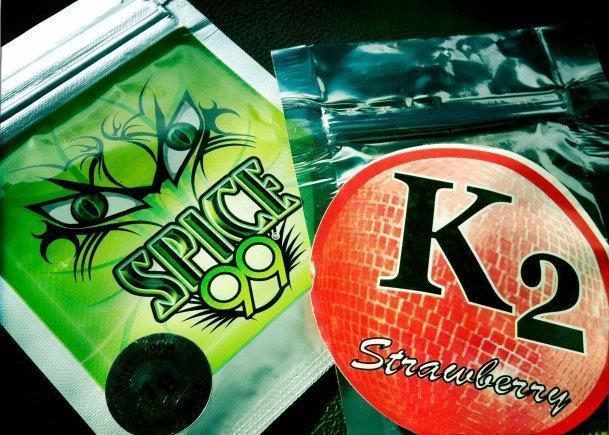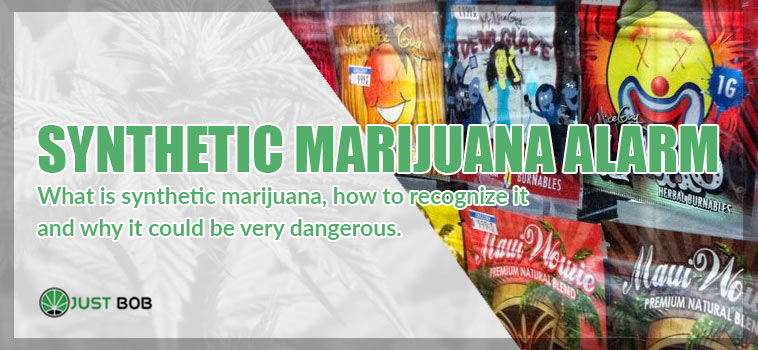WHAT IS SYNTHETIC MARIJUANA, HOW TO RECOGNIZE IT AND WHY IT COULD BE VERY DANGEROUS
Other than CBD marijuana alarm: synthetic marijuana, a very different product from legal cannabis, is scaring many people.
For example, in New Haven Green, a park in Connecticut, 72 overdoses were found, of which 6 were very close to death.
The alarm raised by the American FDA (Food and Drugs Administration) should therefore not be underestimated. The US government agency, after analyzing various samples of this synthetic cannabis, made the world aware of its danger to our health.
But have the classic cannabis and the so-called synthetic marijuana something in common? Do the consumers of the former run the same dangers as the latter? Let’s try to understand more.
What are synthetic cannabinoids?
Although apparently similar, marijuana (legal CBD flowers and illegal) and synthetic cannabis are extremely different and their effects are different.
What makes synthetic cannabis so frightening is its being imbued with psychoactive substances produced in the laboratory in awkward and unnatural way.
For this reason they have unpredictable consequences and manifestations in the consumer.
The chances of contamination of this substance with molds, pesticides or heavy metals with a high level of toxicity are very high, with very serious health consequences.
The risks of synthetic cannabis, also known as spice or K2, are 30 times higher than natural cannabis.
What easily allows its diffusion is the low cost and the psychoactive effects, that are much higher than the normal or light marijuana.
These effects are due to the high content of the THC molecule, which “gives” to those who use it a sense of even greater and longer buzz, but increasing their unpredictability. It is also less detectable as a substance in the urine test.
A serious health hazard that extends especially among the very young.
In our country, 1 in 10 adolescent boys has consumed synthetic cannabinoids at least once, according to the Espad Italy report.
The sample taken into consideration is that of about 275 thousand students.
But how to recognize synthetic marijuana?
We can say that the classic hemp, both light and not, is always found in the form of inflorescence.
The synthetic one is a mix of herbs and other substances, so it is already chopped and ready for use. Furthermore the packages are often (but not always) named with the abbreviation K2 or the word Spice combined with another word.
Any examples?
Spice Diamond, Spice Gold, Spice Silver etc.

The names, however, can also be different (there is, for example, also the Black Mamba), so the peculiarity that mainly distinguishes the synthetic hemp is the fact that it is configured as a chopped ready one.
>> Read also: Marijuana California Haze, all the features of this variety
How does synthetic cannabis work and what effects does it produce?
There are hundreds of different types of cannabinoids and they all stimulate the CB1 cell receptor, located in the area of the endocannabinoid system of the brain (the SEC).
Although synthetic marijuana acts on the same receptors on which the THC of the classical herb usually takes effect. However, it does not have cannabidiol, also called CBD, a non-psychoactive molecule that has the function of limiting and controlling the psychoactive effects of THC.
This not only makes the duration of the effects different, but changes the various stages of cannabinoid metabolism, making its effects not controllable and more dangerous for health.
Making use of synthetic marijuana is a bet, since in some cases the THC molecule does not change in the laboratory, in others it has deleterious consequences for the consumer.
The absence of CBD, a natural brake on the psychoactivity of THC, is felt.
Uncontrollable general anxiety states, nausea, paranoia, panic crisis and the whole spectrum of anxiety sensations and disorders that resemble those of a real case of “psychotic case” are among the possible side effects of synthetic marijuana.
Furthermore, inside, as the FDA has shown, it is possible to find rat poison or high-level hallucinogenic opioids.
>> Read also: Indica or sativa marijuana: here are the differences
CBD cannabis and synthetic cannabis: Same risks?
Absolutely not.
Legal weed is a cannabis sativa with a THC level lower than 0.2% as required by the Italian law, thus making the capacity of the psychoactive THC molecule so limited as to be considered absent. On our website you will be able to buy legal weed online – being sure that it complies with Italian regulations.
Beyond this, legal weed has a very large amount of CBD, which, as we have seen, is a brake and a limiter of the natural psychotropic effects of THC.
It is also a molecule used by the world of medicine in different forms and uses, given its extraordinary healing properties.
CBD weed is used as a remedy for physical and non-physical diseases, such as anxiety, post-traumatic disorder or obsessive compulsive disorder.
It helps to manage these pathologies of the psyche by alleviating anxiety, helping to counteract the insomnia and depression generated by these states of alteration of the mind.
It has great anti-inflammatory properties, it is used for the treatment of diseases such as arthritis or severe inflammation. Very interesting is the use of cbd oil due to the versatility of this product.
It contains anticonvulsant properties, useful for the management and reduction of epileptic seizures.
Its protective properties are such that it is often used in other forms and areas, such as cosmetics.
The presence of considerable quantities of essential fatty acids (Omega3 and Omega6) allow maintenance and a great quality of skin hydration.
It is also used as a balm and a curative gel, to be spread with care in the painful area.
In short: a product that is completely different from synthetic marijuana, which continues to claim victims but which, unfortunately (and unlike the inexplicable terrorism on light hemp) nobody talks about enough.



